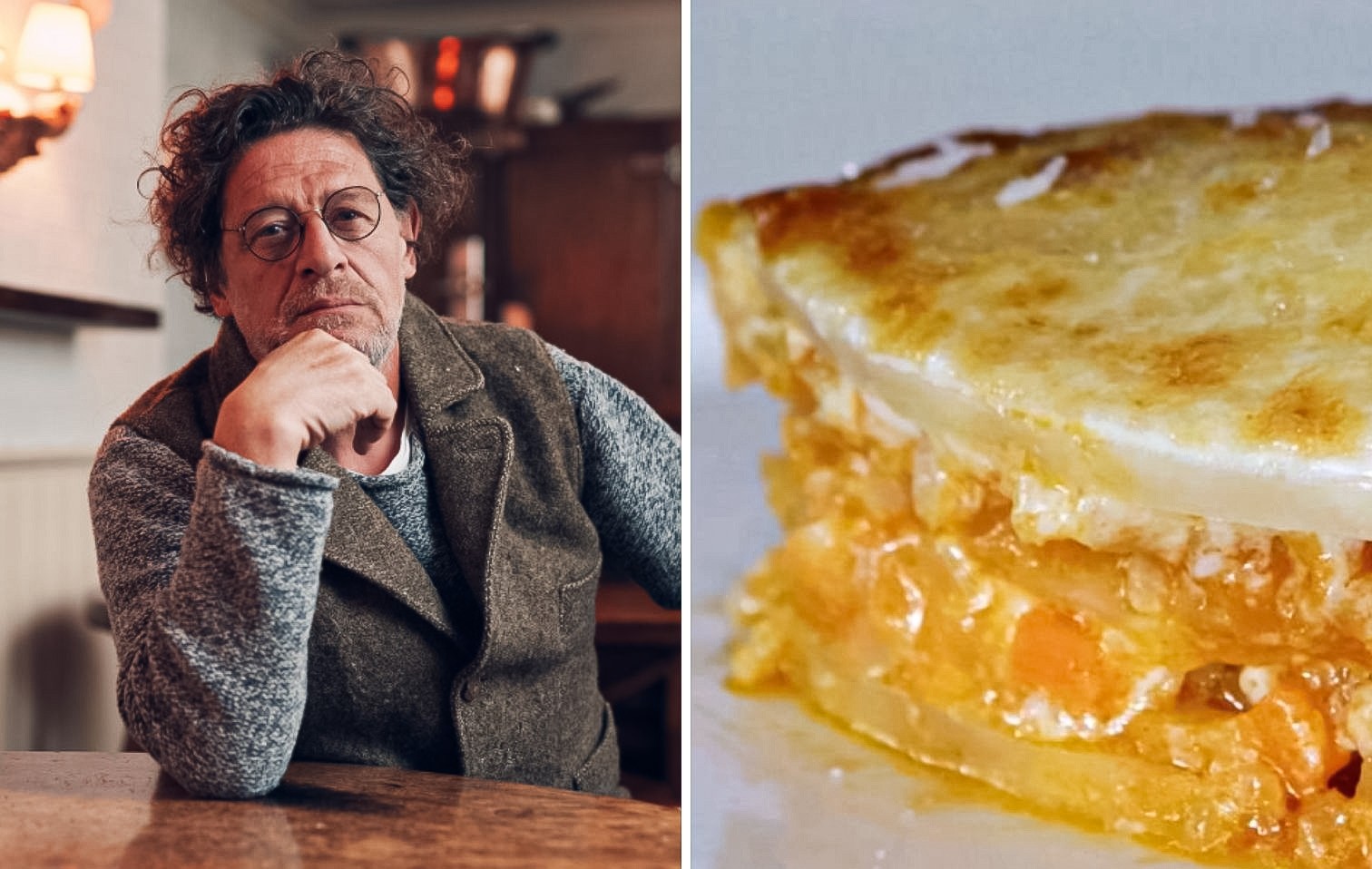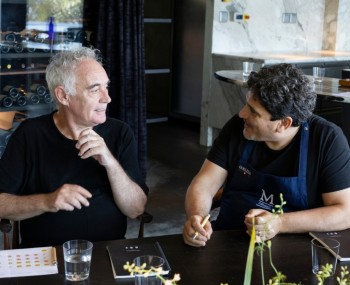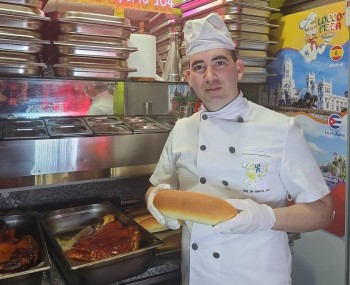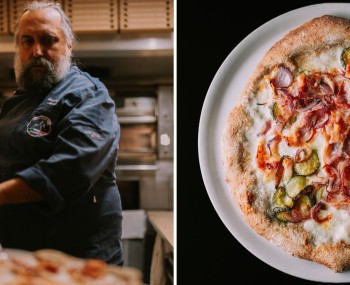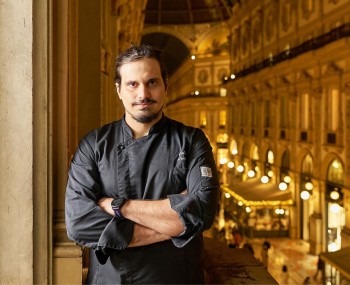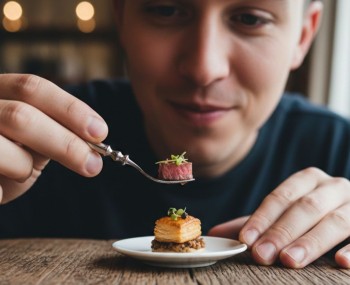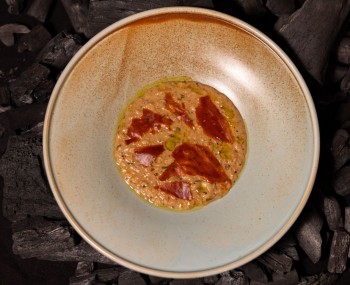The great British chef has long manifested his interest in green cooking, eating vegan for 9 months and devising animal protein-free menus for his restaurants. Here is his inclusive and sustainable interpretation of the classic lasagna, entirely vegetarian and almost gluten-free.
Photo and recipe: BBC MAESTRO credits
The dish
One would expect anything from Mr. “genius and unruliness” Marco Pierre White, except a vegetarian (where meat is replaced by mixed vegetables, including cauliflower florets) and almost gluten-free lasagna (instead of pasta there are celeriac slices, but 50 g of flour remains in the béchamel sauce). The great chef, renowned and celebrated for his classic dishes, such as the pig's trotter, has indeed been expressing his interest in green cooking for years, even attempting a vegan diet (discontinued due to constant lack of satiety) during nine months.
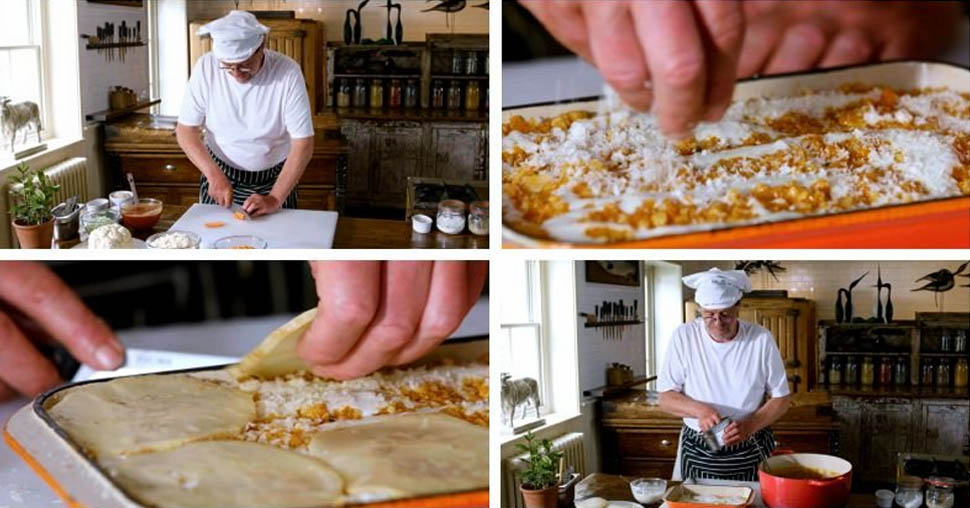
There has even long been a vegan offering in his restaurants that includes cultured meat, putting him at the forefront of sustainability and inclusion. Because, he says, the world needs to eat less meat and demand for it rightly continues to mount.
MARCO PIERRE WHITE'S VEGETARIAN LASAGNA
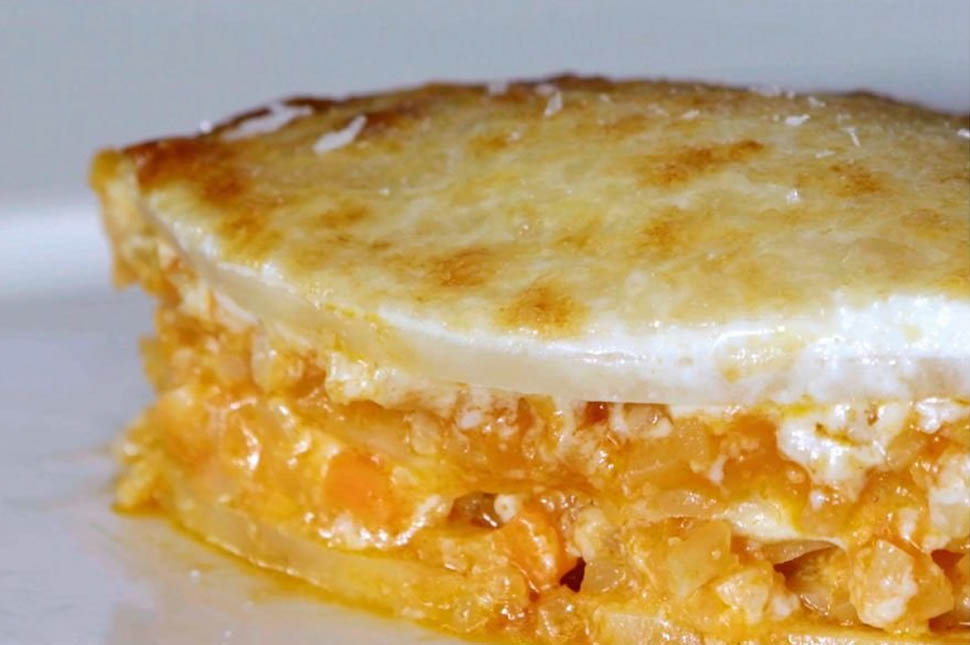
Ingredients for 6 people
For the celeriac sheets
- 1 celeriac
- ½ lemon
- Sea salt
For the béchamel sauce
- 75 g butter
- 50 g flour
- 500 ml whole milk
- A few gratings of nutmeg
- 50 ml heavy cream
- 1 bay leaf
For the ragu
- 4 tablespoons extra virgin olive oil
- 1 onion peeled and chopped
- 2 cloves of garlic peeled and chopped
- 2 medium carrots finely diced
- 200 g finely diced peeled celeriac
- 1 finely diced celery stalk
- 1 finely diced cauliflower (florets only)
- 3 sprigs of thyme
- 2 bay leaves
- Sea salt
- White mill pepper
- 500 ml tomato puree
- 100 g grated Italian cheese, such as Parmigiano Reggiano
Procedure
Trim and peel the celeriac so that it retains its shape. Rub it with lemon to prevent discoloration.
Bring a large pot of water to a gentle simmer. Vacuum (or wrap in plastic wrap) the vegetable with a couple of pinches of salt. Cook in the water for 75 minutes, trying to keep the temperature just below boiling point, around 95 °C.
Allow the celeriac to cool before pulling it out. Set the liquid aside for making the sauce.
For the béchamel sauce, melt the butter in a saucepan over medium heat, add the flour and stir with a whisk for 3-4 minutes. Pour in the milk while continuing to stir. Grate some nutmeg into the sauce, to your taste. Incorporate cream and bay leaf, adjust salt and white pepper. Continue stirring with a whisk over a medium-low heat for 10 to 15 minutes and set aside.
For the ragu, heat olive oil in a large saucepan over medium-high heat, add onion and garlic. Turn them over the bottom of the pan so that they cook evenly and quickly. Add carrots, celeriac, celery, cauliflower, thyme, and bay leaf. Stir well. Season with salt and pepper and continue cooking, allowing the water to evaporate from the vegetables.
Pour in the tomato and continue cooking until it is reduced, but the vegetables retain their textures. They should not break down or become mush. Discard the thyme and bay leaf; set the ragu aside.
Preheat the oven to 160 °C.
Cut celeriac to the thickness and size of lasagna noodle sheets. Grease a baking dish with oil. Spread a layer of ragu on it and cover with the celeriac slices. Sprinkle with béchamel sauce and grated cheese. Form another layer of ragu, béchamel sauce, celeriac, and so on. Finish with a layer of celeriac and press lightly to compact. Season and top with bechamel sauce, sprinkle with remaining cheese.
Bake for about 30 minutes, salt lightly and serve.

